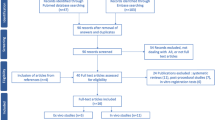Abstract
Robotic partial nephrectomy is presently the fastest-growing robotic surgical procedure, and in comparison to traditional techniques it offers reduced tissue trauma and likelihood of post-operative infection, while hastening recovery time and improving cosmesis. It is also an ideal candidate for image guidance technology since soft tissue deformation, while still present, is localised and less problematic compared to other surgical procedures. This work describes the implementation and ongoing development of an effective image guidance system that aims to address some of the remaining challenges in this area. Specific innovations include the introduction of an intuitive, partially automated registration interface, and the use of a hardware platform that makes sophisticated augmented reality overlays practical in real time. Results and examples of image augmentation are presented from both retrospective and live cases. Quantitative analysis of registration error verifies that the proposed registration technique is appropriate for the chosen image guidance targets.






Similar content being viewed by others
References
Gautam G, Benway BM, Bhayani SB, Zorn KC (2009) Robot assisted partial nephrectomy: current perspectives and future prospects. Urology 74(4):735–740
Teber D, Guven S, Simpfendörfer T, Baumhauer M, Güven EO, Yencilek F, Gözen AS, Rassweiler J (2009) Augmented reality: a new tool to improve surgical accuracy during laparoscopic partial nephrectomy? Preliminary in vitro and in vivo results. Eur Urol 56(2):332–338 (Epub 2009 May 19)
Altamar HO, Ong RE, Glisson CL, Viprakasit DP, Miga MI, Herrell SD, Galloway RL (2011) Kidney deformation and intraprocedural registration: a study of elements of image-guided kidney surgery. J Endourol 25(3):511–517 (Epub 2010 Dec 13)
Su LM, Vagvolgyi BP, Agarwal R, Reiley CE, Taylor RH, Hager GD (2009) Augmented reality during robot-assisted laparoscopic partial nephrectomy: toward real-time 3D-CT to stereoscopic video registration. Urology 73(4):896–900 (Epub 2009 Feb 4)
Stolka P, Keil M, Sakas G, McVeigh E, Allaf M, Taylor R, Boctor E (2010) A 3D-elastography-guided system for laparoscopic partial nephrectomies. In: Proceedings of SPIE 7625, 76251I-1
Kirk D, Hwu W (2010) Programming massively parallel processors: A hands-on approach. Morgan Kaufmann, Burlington, MA
Rost RJ, Licea-Kane B, Ginsburg D, Kessenich JM, Barthold L, Malan H, Weiblen M (2009) The OpenGL Shading Language. Addison-Wesley Professional, Boston, MA
Lerotic M, Chung A, Mylonas G, Yang G-Z (2007) pq-Space based non-photorealistic rendering for augmented reality. MICCAI Part II. LNCS 4792:102–109
Miller K, Joldes G, Lance D, Wittek A (2007) Total Lagrangian explicit dynamics finite element algorithm for computing soft tissue deformation. Commun Numer Methods Eng 23(2007):121–134
Yushkevich P, Piven J, Cody Hazlett H, Gimpel Smith R, Ho S, Gee J, Gerig G (2006) User-guided 3D active contour segmentation of anatomical structures. Neuroimage 31(3):1116–1128
Geuzaine C, Remacle JF (2009) Gmsh: a three-dimensional finite element mesh generator with built-in pre- and post-processing facilities. Int J Numer Methods Eng 79(11):1309–1331
Zhang Z (2000) A flexible new technique for camera calibration. IEEE Trans Pattern Anal Mach Intell 22(11):1330–1334
Stoyanov D, Mylonas GP, Deligianni F, Darzi A, Yang G-Z (2005) Soft-tissue motion tracking and structure estimation for robotic assisted MIS procedures. MICCAI Part II. LNCS 3750:139–146
Bradski A, Kaehler A (2008) Learning OpenCV: computer vision with the OpenCV library. O'Reilly Media Inc., Sebastopol, CA
Moller T, Trumbore B (1997) Fast, minimum storage ray-triangle intersection. J Graphics Tools 2(1):21–28
Hanson A (1992) The rolling ball. In: Graphics Gems III. San Diego, Academic Press Professional, pp 51–60
Horn BKP (1987) Closed-form solution of absolute orientation using unit quaternions. J Opt Soc Am 4(4):629–642
Alleemudder A, Dudderidge T, Rao AR, Mayer EK, Hrouda D, Vale JA, Khoubehi B (2011) Feasibility of robotic partial nephrectomy in a UK Cancer Centre. Br J Med Surg Urol 4:78–85
Ljungberg B, Cowan NC, Hanbury DC, Hora M, Kuczyk MA, Merseburger AS, Patard J-J, Mulders PFA, Sinescu IC (2010) EAU guidelines on renal cell carcinoma: the 2010 update. Eur Urol 58(3):398–406
Benway BM, Bhayani SB, Rogers CG, Porter JR, Buffi NM, Figenshau RS, Mottrie A (2010) Robot-assisted partial nephrectomy: an international experience. Eur Urol 57(5):815–820 (Epub 2010 Jan 22)
Lam JS, Bergman J, Breda A, Schulam PG (2008) Importance of surgical margins in the management of renal cell carcinoma. Nat Clin Pract Urol 5(6):308–317 (Epub 2008 May 13)
Herrell SD, Kwartowitz DM, Milhoua PM, Galloway RL (2009) Toward image guided robotic surgery: system validation. J Urol 181(2):783–789 (discussion 789–790) (Epub 2008 Dec 16)
Cheung C, Wedlake C, Moore J, Paulter S, Peters T (2010) Fused video and ultrasound for minimally invasive partial nephrectomy: a phantom study. MICCAI Part III. LNCS 6363:408–415
Pratt P, Stoyanov D, Visentini-Scarzanella M, Yang G-Z (2010) Dynamic guidance for robotic surgery using image-constrained biomechanical models. MICCAI Part I. LNCS 6361:77–85
Acknowledgments
An abstract of this work was presented at the Hamlyn Symposium on Medical Robotics, June 2011, London. Volume rendering software was provided by Anatomage Inc. The authors are grateful for support from The Hamlyn Centre and the NIHR Biomedical Research Centre funding scheme.
Conflict of interest
None.
Ethical standards
Favourable ethical opinion for the image collection and guidance protocols used in this study was given by the research ethics committee West London REC 2. Written informed consent was obtained from recruited patients for publication of this article and any accompanying images. A copy of the written consent is available for review by the Editor-in-Chief of this journal.
Author information
Authors and Affiliations
Corresponding author
Additional information
Philip Pratt and Erik Mayer are joint first authors.
Rights and permissions
About this article
Cite this article
Pratt, P., Mayer, E., Vale, J. et al. An effective visualisation and registration system for image-guided robotic partial nephrectomy. J Robotic Surg 6, 23–31 (2012). https://doi.org/10.1007/s11701-011-0334-z
Received:
Accepted:
Published:
Issue Date:
DOI: https://doi.org/10.1007/s11701-011-0334-z




